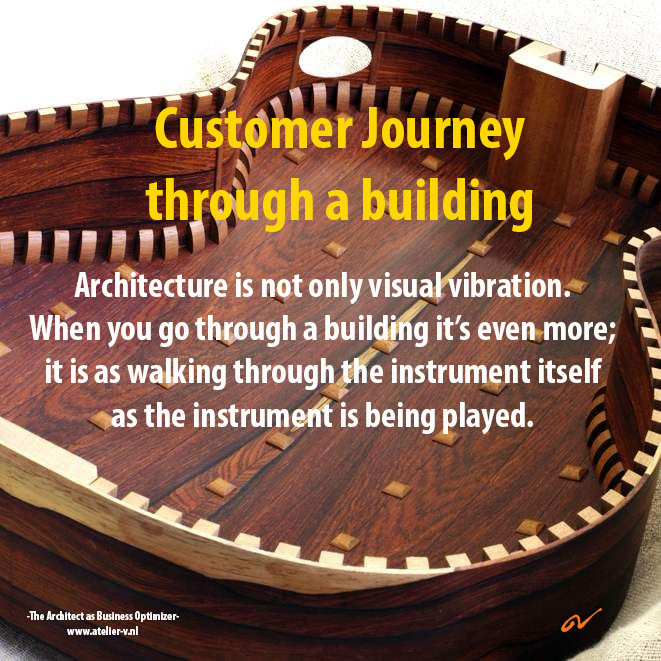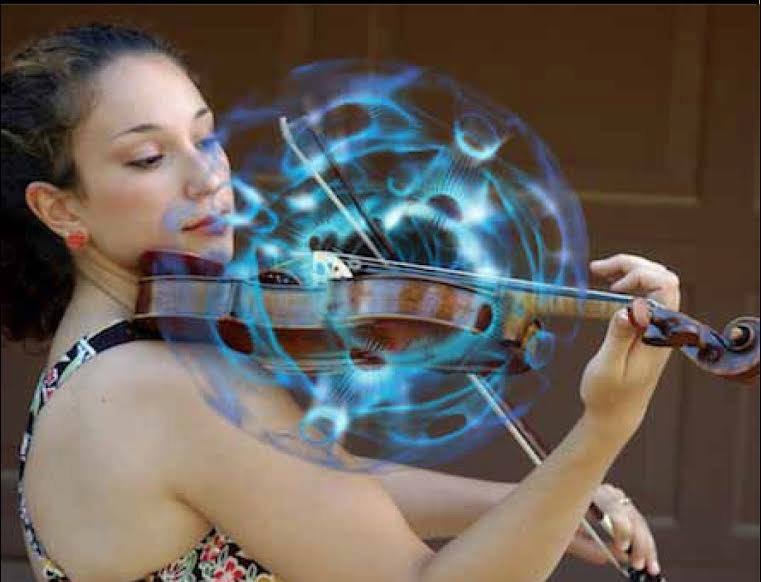
Musical symphony
Architecture and urban planning evolved out of what is now called geomancy, the art of placing or arranging buildings or sites auspiciously. Tuning architecture to nature’s heartbeat and making it a sacred power spot by harmonic resonance, resulting in a harmonic instrument.
Resonance connects two energy systems with similar energy qualities, exchanging energy and information. This leaves an energy imprint from one system to another that creates a memory.
Geometry is a visual representation and structural manifestation of vibrations made possible by light as sound is an audible manifestation of vibration. By ‘tuning’ a building, a musical symphony is created instead of a cacophony of sound. This creates a built environment where people and organisations can recharge themselves to create value together.
Architecture is not only visual vibration. When you go through a building it’s even more; it is as walking through the instrument itself as the instrument is being played. Architecture creates buildings as giant resonating musical instruments. Buildings are ‘frozen’ music and shape our life.
As music is the vibration of sound, architecture is about visual geometrical and spatial vibrations, and much more. When we move through a building, it can shape our thoughts and feelings just as music does.
“Why does this space feel good?” is a similar question to “Why does this music move me to tears?” (Richard Feather Anderson)
As the sound engineer and researcher Richard Merrick describes it in his book The Venus Blueprint: “In the ancient world, temples were, by and large, a transformational technology available to everyone to help people achieve higher states of consciousness. Founded on principles of resonance, they were designed to harmonize the physics of the outer world with the phenomenological experience of the inner world.”
“Energy currents in the human body are linked to an underlying harmonic lattice in space.” In other words, the human body is a tunable resonating bio-device. As Merrick continues: “More than just a prosaic description of life as music, an open-minded look at harmonic patterns and organisation of the human body proves that resonant processes really are a guiding factor behind evolution.” Because resonance is a two-way information exchange.
“Nothing rests. Everything moves. Everything vibrates.” – Kybalion
Basic science tells us that atoms are made of constant motion as is the universe itself. Every single mode of vibration impacts something in a resonant way. And it impacts other things in a consonant or dissonant (lacking harmony) way. The principle of vibration says that all things, both physical and spiritual hold a certain vibration.
Music is embodied, a meaning that can be felt in the music sound waves and not just in the notes. Music is appreciated not just with your mind but with your body as well. A knowing that one can feel, but cannot describe in full. Likewise, architecture is appreciated with your body.
Transforming the sound wave’s physical qualities (frequency, amplitude, complexity and duration) into felt dynamic qualities and events (e.g., motion, force, intensity, tension, relaxation, mood, gesture or momentum).
Seeing a building like a bunch of separate parts creates chaos. It is as the tuning of the instruments before they know their place within the whole symphony. Until under the guiding principles of order, discipline, balance, measure, time and harmony, the many remember again their oneness within the whole. The balanced alchemy of the outer environment (physical, digital, social) with the inner environment (body, mind, heart, spirit) of the users. Resolving the chaos of the many back into the unity of the whole, the harmony of the symphony. Architecture is a Symphony of Form.
Could it be that contemporary Architecture hearing the sound of many parts within the seemingly chaotic interference of the parts of our built environment has forgotten the art of listening for that one vibration of the elegant structure of the harmonious whole? The ancient science of harmony in nature, harmonics and sacred geometry create harmonically resonating spaces. Sound current vibrates in all creation.


All physical matter in our universe is vibrating and emanates a field of energy that can be measured and influenced. This is true for both the human body as well as for buildings. Vibrations have an effect on matter and thus also on living beings.
In a situation you have only three possibilities; accept it, change it or leave it. The same you could say about the entrainment effect of vibrations. Brainwave entrainment refers to the brain’s electrical response to rhythmic sensory stimulation, such as pulses of sound or light.
For example when you hear music or are in an environment, you either “move with it”, change it, or leave it. You cannot ignore the music/vibration. Vibration always tries to interact with another vibration.
According to Louis Turenne shapes such as pyramids, spheres and squares act as resonators for telluric and cosmic forces. Just as the shape of a violin improves the quality of tone, the shape provides a resonant cavity for crystalline structures, Such as materials and biological life including humans.
The geometry of a space influences the way atoms and air interact and move within a given area just as a vortex in water behaves differently according to the shape through which it flows.
Geometrical shapes do have a corresponding effect on the human body’s own geometry. Thus rooms of different shapes generate different energetic environments that are capable of influencing the senses.
Harmonizing form/shape and materialization to enhance the health and well-being of building users. There is a duality between shape and vibration. The way something vibrates is a reflection of the whole shape. The whole is more than the sum of its parts. Just like sound can create order from chaos, so does architectural form create orderliness. For an example of how vibrations affect matter see the video about Cymatics.
